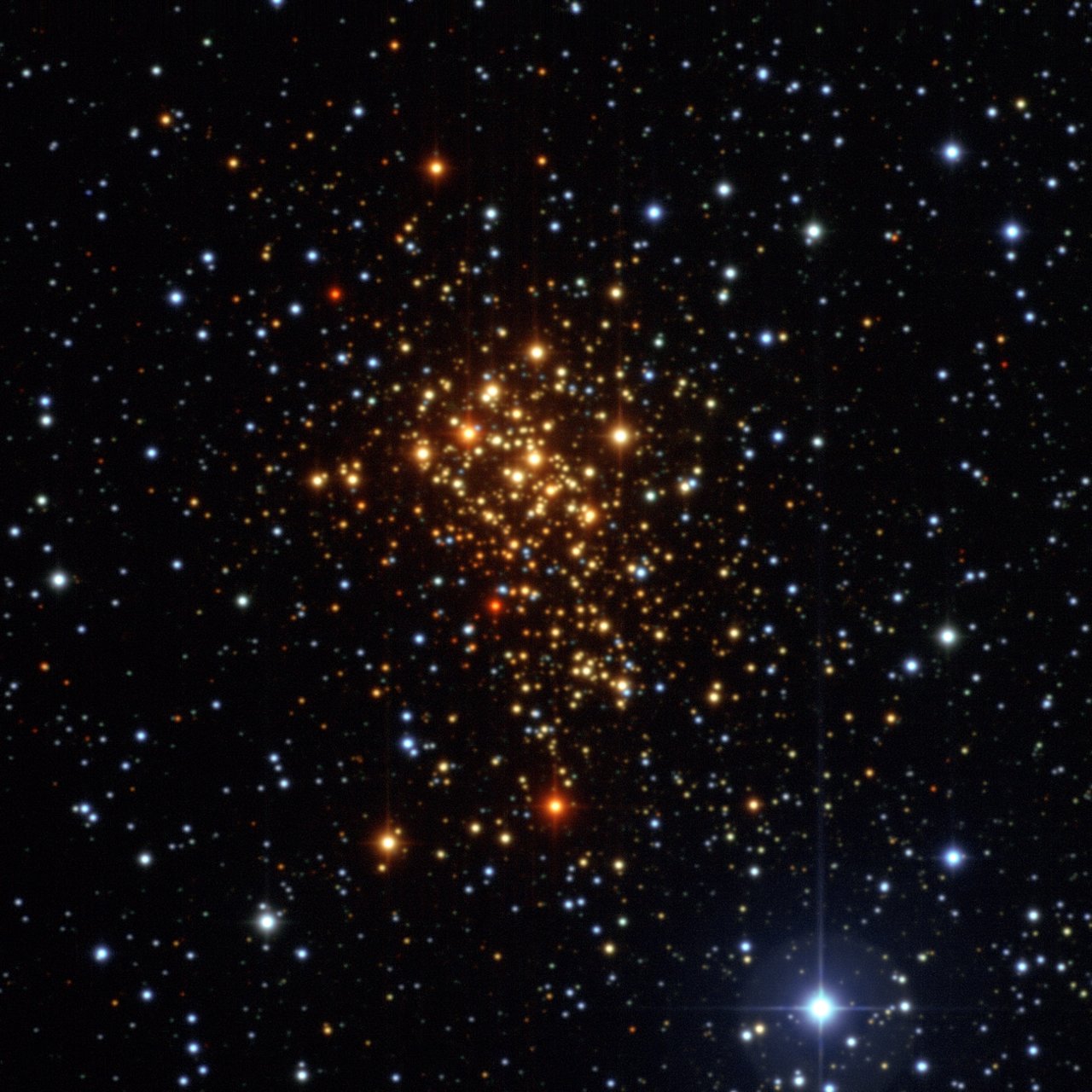Research Overview
Young massive clusters (YMCs, sometimes known as super star clusters) are recently formed astronomical objects in galaxies. They are commonly thought as the building blocks of galaxies and the small but excellent star-making factories, yet how they are born is still not fully understood. Being young and massive, YMCs lie somewhere in between globular clusters and open clusters in the mass-age spectrum. A YMC is typically 10,000 times more massive than the Sun and 10,000 times denser than the outer space. It has age less than 100 million years, very young with respect to the age of the universe. A relatively well known YMC in our galaxy is Westerlund 1 as shown below (image credit: ESO).

There are a few ways YMCs can be formed, both in theory and in observation, but one that I’m interested in is their formation through collisions of giant molecular clouds. These clouds can be hundreds of light-years in size and as massive as 1,000,000 solar masses, so there’s plenty of gas available for star formation when the clouds interact. The cloud-cloud collision model can explain why there are more YMCs observed in interacting galaxies like Antennae as compared to the quiescent Milky Way, since cloud-cloud collisions are more frequent in highly-dynamic environments.
Understanding the formation of YMCs is important as it connects with different branches of astrophysics. Having extremely high star formation rate, they act as ideal laboratories for astronomers to study the formation of globular clusters, which is an open question as globular clusters can be as old as our universe itself. Being the fundamental unit of star-forming galaxies, studying how YMCs are created and evolve allow astronomers to constraint current theories of galaxy formation. In planetary scale, understanding the stellar dynamics within the YMC will allow us to learn about initial conditions needed to form planetary systems, which will contribute to the knowledge of how our own Solar System is formed, and whether similar planetary systems can be found in other parts of our universe.
